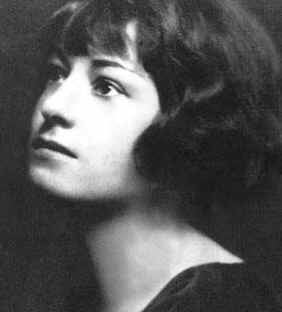Brief and charming and full of a spectacular wit, Dorothy Parker’s “Condolence” is the the kind of poem that you would bring to a funeral or memorial service that is acting as as a life-celebration event. The poem invites readers to subvert what they know about mourning, while it celebrates the closeness that we can feel to those that we know better than anyone else.
Although it speaks freshly of the death of a cherished companion, Parker uses me-versus-them wordplay to highlight how degrees in separation influence the mourning process and make up so much of what we know and expect in traditional funeral formats. As the speaker begins, “They hurried here, as soon as you had died,/Their faces damp with haste and sympathy,”(1-2) she captures the strange rush that can take place after a death, as funeral preparations must be made, paperwork must be signed and distant friends and family must dole out morose sympathy to immediate loved ones.
Parker uses me-versus-them wordplay to highlight how degrees in separation influence the mourning process and make up so much of what we know and expect in traditional funeral formats.
The fact that every reference to ‘They’ is tied with physical actions, such as is the case when they “pressed my hand in theirs, and smoothed my knee,/And clicked their tongues, and watched me, mournful-eyed.” (3-4) In these actions, we find the traditional forms of comfort that are most commonly depicted and expressed after a significant loss. In this, we see how others reach out physically to comfort us, how they elect to cry with us and, in many cases, focus on theological or ideological comforts, such as that of the “Other Side” (5).

Credit: Wikipedia
In many ways, it seems that this is our job. The agreement that we signed on to when we were all birthed as humans with the same thoughts and fears on mortality and loneliness. After the tragic event of a death, the attitude of action seems to come so automatically to us that it is hard to notice. It’s impossible to understand and relate to how someone is feeling as the grieving process is already setting in, so we walk on eggshells and try to act how we think we would act if the devastation of loss was hitting more close to our own hearts.
After the tragic event of a death, the attitude of action seems to come so automatically to us that it is hard to notice.
While this thought process isn’t wrong, it is a process that “Condolence” chooses to point out and poke fun at in a tongue-and-cheek manner, in the final lines, “But I had smiled to think how you, the dead,/So curiously preoccupied and grave,/Would laugh, could you have heard the things they said.” (12-14). In these last words, the speaker has chosen to reflect, rather than to act, on her loss. Because in the end, it is reflection, and not action, that makes us distinctly human. Likewise, by reflecting on loss and love in the face of grief, you may find that you are able to carve out your own path to mourning a loss and learning how to move on.
Related SevenPonds Articles:
- A Fine Line Between Acute and Complicated Grief
- The Unadulterated Importance of Proper Funeral Etiquette
- The Hour of Lead

 “Condolence” by Dorothy Parker
“Condolence” by Dorothy Parker



 Forest Bathing Eases Grief by Soaking in Nature
Forest Bathing Eases Grief by Soaking in Nature
 The Spiritual Symbolism of Cardinals
The Spiritual Symbolism of Cardinals
 Meaning-Focused Grief Therapy: Imaginal Dialogues with the Deceased
Meaning-Focused Grief Therapy: Imaginal Dialogues with the Deceased














